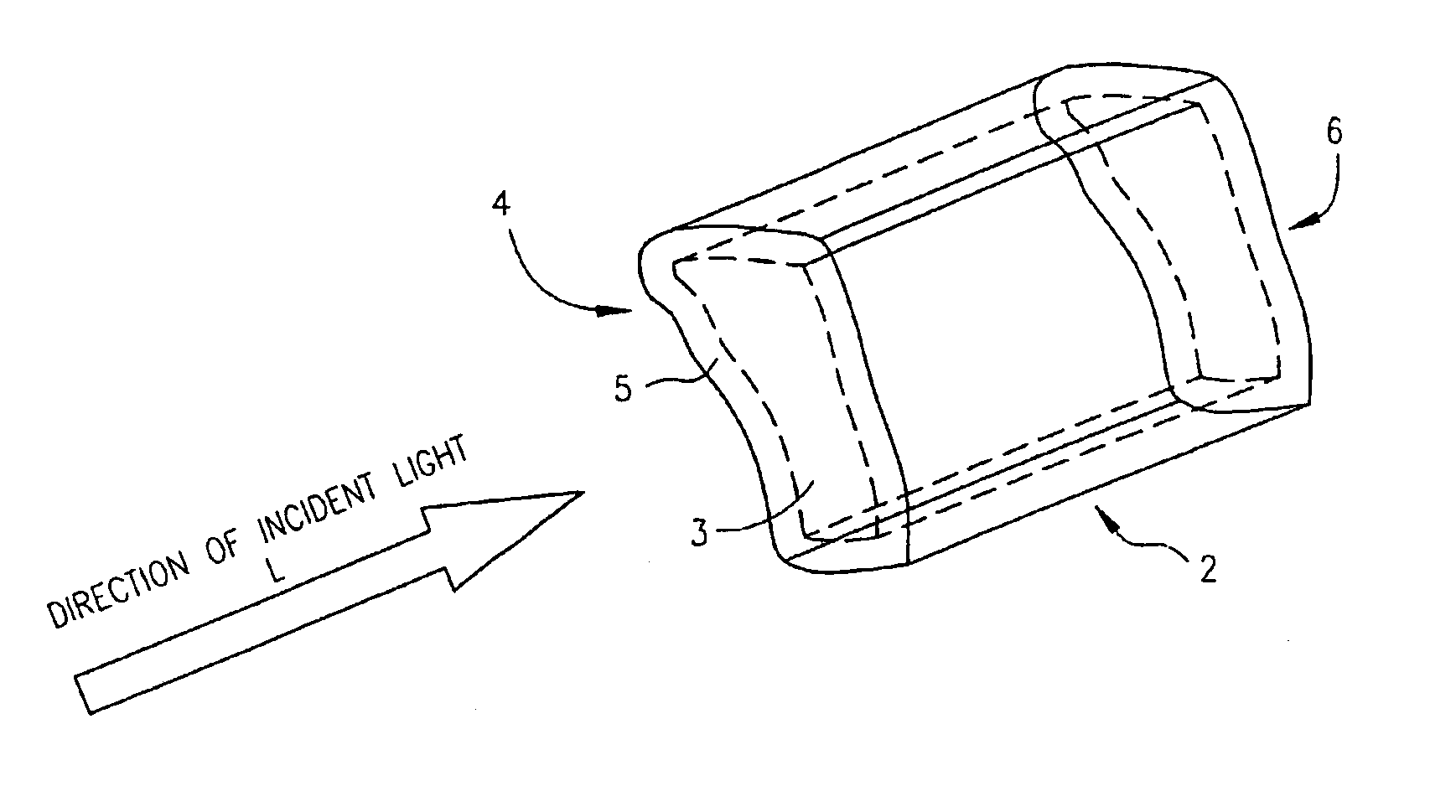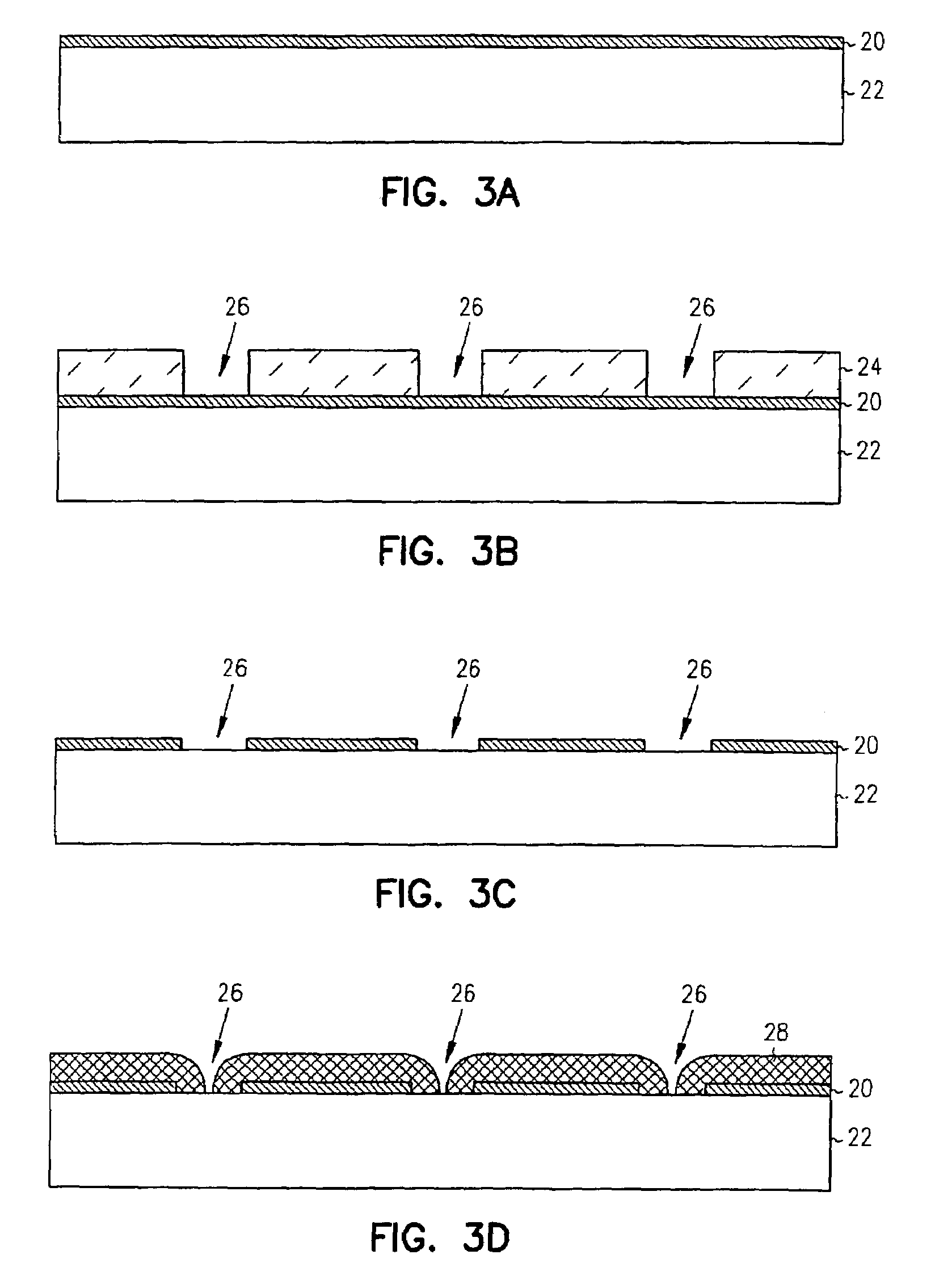Waveguides for performing spectroscopy with confined effective observation volumes
a technology of effective observation volume and waveguide, which is applied in the direction of fluorescence/phosphorescence, instruments, cladded optical fibre, etc., can solve the problems of very low efficiency of near-field fiber collection and very inefficient prior ar
- Summary
- Abstract
- Description
- Claims
- Application Information
AI Technical Summary
Benefits of technology
Problems solved by technology
Method used
Image
Examples
example 1
Fabrication of Zero-Mode Waveguide Array
[0053]Arrays of zero-mode waveguides were manufactured as small holes in a 50 nm thick film of aluminum on a glass or fused silica coverslip. The steps for the fabrication of the devices are as follows. First, the cover glasses were cleaned with a solution of one part ammonium hydroxide, one part hydrogen peroxide, and six parts water at 70° C. The coverglasses were immersed in this solution for 10 minutes, and then rinsed in a overflowing bath of deionized water for 10 minutes. The samples were dried with compressed dry nitrogen and then subjected to oxygen plasma for 3 minutes. The cleaned cover glasses were then coated with 50 nm of aluminum by thermal evaporation. An electron beam lithography resist, ZEP-7000A, was spun onto the cover glasses for 60 seconds at 3000 RPM. Excess solvent was driven from the films by baking on a temperature-controlled hotplate for 30 minutes at 170° C. This process yields a film approximately 300 nm thick. The...
example 2
Intensity Evaluation with Zero-Mode Waveguide Array
[0055]Simulations of the electric field inside zero-mode waveguides were performed using a commercial finite-element time-domain Maxwell's equation solver (EMFlex, from Weidlinger Associates, New York, N.Y.). Models were run for right, circular cylindrical waveguides of water in 50 mm thick aluminum films on a glass substrate (index of refraction 1.5). The entire region above the aluminum and inside the waveguides was assumed to be filled with water, and the illumination was, in all cases, normally incident circularly polarized plane waves of light at 6×1014 Hz (corresponding to a vacuum wavelength of 500 nm). The entire region of the model was 1 μm3, and the grid spacing inside and in the vicinity of the waveguides was 1 nm. Although actual experiments would in most cases use tightly focused light, rather than the plane waves modeled here, the dimensions of the waveguides modeled are small enough compared with the wavelength of lig...
example 3
Spectroscopy with Zero-Mode Waveguides
[0057]For fluorescence applications, one can define the size of effective observation volume, V, as V=∫S(r)ⅆ3r∫S(r)ⅆ3r∫S2(r)ⅆ3r
where S(r) is the observation efficiency at the point r, and for this system S(r)=12(r). FIG. 13 shows the effective volume of zero order waveguides in aluminum illuminated with 6×1014 Hz light as a function of waveguide diameter. Volumes are on the order of 50 zeptoliters (10−21 liters). This compares to 0.5 femtoliters (10−15) for a typical diffraction-limited focal volume.
[0058]The effectiveness of the waveguides in confining the volume of illumination was evaluated using fluorescence correlation spectroscopy (“FCS”). FCS involves illumination of a sample volume containing dye molecules in solution. The diffusion of molecules into and out of the effective observation volume leads to fluctuations in the number of observed molecules and hence to fluctuations in the fluorescence signal. These fluctuations occur...
PUM
 Login to View More
Login to View More Abstract
Description
Claims
Application Information
 Login to View More
Login to View More - R&D
- Intellectual Property
- Life Sciences
- Materials
- Tech Scout
- Unparalleled Data Quality
- Higher Quality Content
- 60% Fewer Hallucinations
Browse by: Latest US Patents, China's latest patents, Technical Efficacy Thesaurus, Application Domain, Technology Topic, Popular Technical Reports.
© 2025 PatSnap. All rights reserved.Legal|Privacy policy|Modern Slavery Act Transparency Statement|Sitemap|About US| Contact US: help@patsnap.com



